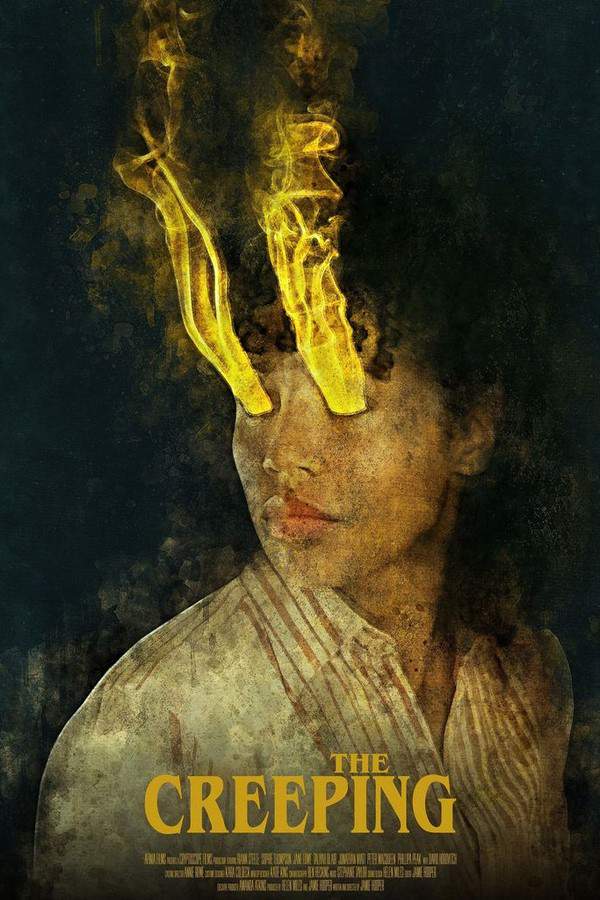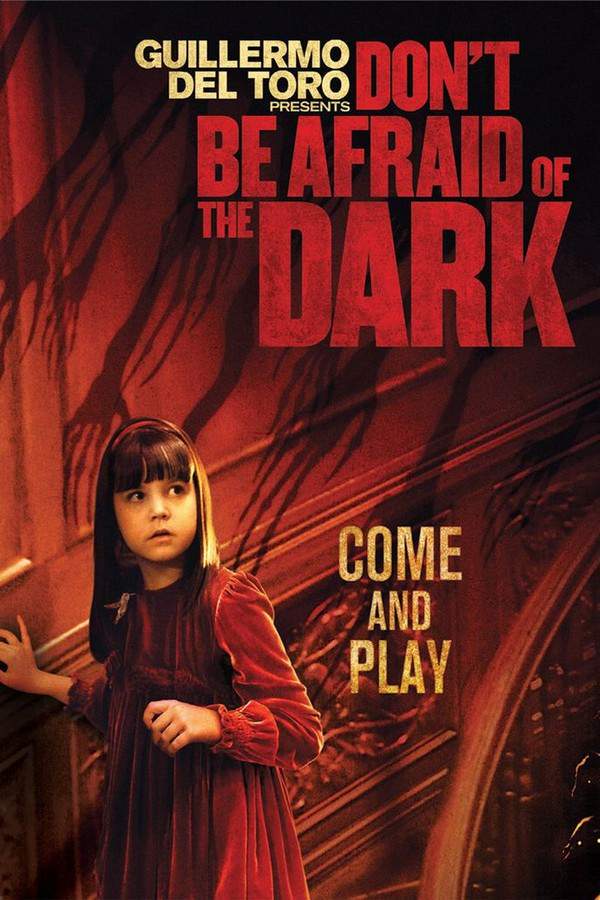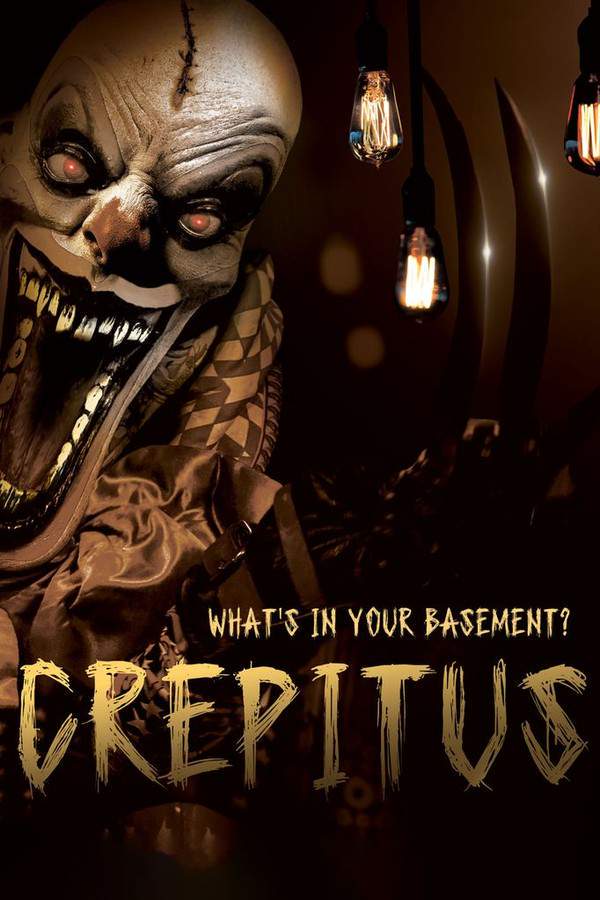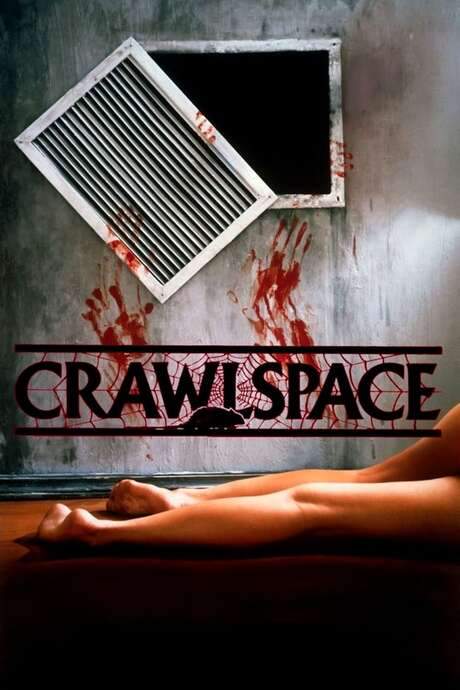The Creeping 2023

A lone caregiver finds herself battling an ancient evil that endangers her and her vulnerable grandmother. As night descends, they are trapped within their decaying home, forced to confront the sinister forces and unsettling shadows that surround them. The caregiver must find a way to protect her grandmother and fight back against the encroaching darkness.
Does The Creeping have end credit scenes?
No!
The Creeping does not have end credit scenes. You can leave when the credits roll.
Meet the Full Cast and Actors of The Creeping
Explore the complete cast of The Creeping, including both lead and supporting actors. Learn who plays each character, discover their past roles and achievements, and find out what makes this ensemble cast stand out in the world of film and television.
External Links and Streaming Options
Discover where to watch The Creeping online, including streaming platforms, rental options, and official sources. Compare reviews, ratings, and in-depth movie information across sites like IMDb, TMDb, Wikipedia or Rotten Tomatoes.
Ratings and Reviews for The Creeping
See how The Creeping is rated across major platforms like IMDb, Metacritic, and TMDb. Compare audience scores and critic reviews to understand where The Creeping stands among top-rated movies in its genre.

The Movie Echo Score
The Creeping elicits a mixed response, with praise directed toward its retro visual style and atmospheric setting, while criticism focuses on uneven pacing, predictable plot, and inconsistent performances. Critics note the director's command of classic horror aesthetics, yet many viewers find the narrative sluggish and the acting below average. The combination of modest technical merits and notable storytelling flaws results in a middling overall impression.
The Movie Echo Score Breakdown for The Creeping

Art & Craft
In terms of direction and visual craft, the film benefits from a deliberate retro aesthetic that many reviewers cite as effective. Critics commend the director's control of classic horror style, and some viewers appreciate the haunting locations and period‑appropriate cinematography. However, occasional cheap CGI and limited budget are noted as detracting factors. Overall, the artistic execution is solid but not uniformly impressive.

Character & Emotion
When evaluating performances, opinions are divided. Several users describe the acting as below average, citing plastic delivery and lack of tension, while a few highlight a fresh lead actress and moments of emotional resonance. Critics do not specifically praise the cast, focusing instead on thematic content. The mixed feedback suggests the character work is adequate yet hampered by uneven execution.

Story & Flow
The narrative structure receives consistent criticism for its slow pacing and predictable scares. Multiple reviewers label the plot dull, monotonous, and overly familiar, with dialogue-heavy scenes that drag. Although some note an interesting premise surrounding family trauma, the overall storytelling is seen as unoriginal and insufficiently engaging, limiting the film's impact.

Sensory Experience
Sensory elements such as sound design and visual style earn mixed reactions. The film’s atmospheric setting and period‑specific look are praised for their nostalgic quality, yet sound design is described as amateur by some viewers. The use of CGI is occasionally called out as dated, though the overall visual presentation remains a highlight for several reviewers.

Rewatch Factor
Rewatch potential appears low across the board. Many users express little desire to view the film again, citing a lack of compelling tension and a predictable conclusion. While a few find the ambience enjoyable enough for a second glance, the consensus points to limited replay value due to the film's pacing issues and underwhelming narrative payoff.


%
TOMATOMETER

0%
User Score

4.3 /10
IMDb Rating

40
%
User Score

2.8
Take the Ultimate The Creeping Movie Quiz
Challenge your knowledge of The Creeping with this fun and interactive movie quiz. Test yourself on key plot points, iconic characters, hidden details, and memorable moments to see how well you really know the film.
The Creeping Quiz: Test your knowledge on the intricate plot and themes of 'The Creeping' (2023).
Who is the scientist that uncovers the ancient evil in 'The Creeping'?
Prof. Emmanuel Hildern
Dr. James Hildern
Dr. Penelope Hildern
Prof. Richard Hildern
Show hint
Full Plot Summary and Ending Explained for The Creeping
Read the complete plot summary of The Creeping, including all major events, twists, and the full ending explained in detail. Explore key characters, themes, hidden meanings, and everything you need to understand the story from beginning to end.
In a shadowy laboratory, Prof. Emmanuel Hildern (Peter MacQueen) eagerly divulges his revolutionary findings to a young doctor, admitting that he has unwittingly awakened an ancient evil far earlier than anticipated. As he narrates the events leading to this shocking discovery, it becomes apparent that his journey to New Guinea in 1894 was not solely focused on exploration but also driven by a deep desire for validation and recognition in his scientific community.
The flashback unfolds with Hildern’s jubilant return from his expedition, where he unearthed an unusually large humanoid skeleton, unlike any previously identified specimens. The skeleton’s sophisticated features and unexpected youth caused a whirlwind of emotions within Hildern — a blend of pride for his remarkable find accompanied by grief as he learns of his wife’s death. This bittersweet moment is intensified when his half-brother James Hildern (David Horovitch), who managed the asylum where Hildern’s wife was confined, informs him of his plans to publish a study on her mental health conditions while withholding support for future explorations.
As Hildern immersed himself deeper into his studies, his fixation on the skeleton grew, spurred by the mind-boggling idea that contact with water could cause the bones to rapidly develop flesh, reminiscent of age-old legends of malicious giants awakened by rain. With his theory taking form, Hildern determined that this skeleton was a remnant of such a nefarious creature, buried for centuries, now revealed as erosion exposed its resting site. By then, the local tribes would have attained the necessary knowledge to confront this terrifying evil.
Hildern’s remarkable find ignited a fresh zeal in his research. He speculated that if evil could be treated as a living organism, it might be biologically contained and eradicated like a virus. Using cells from the flesh of the skeleton’s finger, he created what he thought might be a serum to combat evil. In a nerve-wracking moment, he tested the serum on a monkey, observing impressive results that boosted his confidence in this inventive solution.
Meanwhile, as news of her mother’s death reaches her, Penelope (Angie Joy), grappling with the painful truth she was kept from, is injected with Hildern’s serum, aiming to suppress any signs of inherited insanity. However, this decision sets off a cascade of chaos, ensnaring Hildern in a series of unsettling events.
The next day, the formerly docile monkey from his lab has transformed wildly, using its new strength to escape and wreak havoc in the facility. In a surge of raw emotion, Penelope wanders off into the city, unleashing her pent-up feelings by assailing several men in a tavern and escalating her fury by fatally injuring someone in a nearby warehouse. The authorities swiftly respond to reports of the asylum’s escaped patient, apprehending Penelope and returning her to her father’s institution.
As the fallout from Penelope’s violent outbursts becomes public, James grows increasingly worried about the fallout from his brother’s experiments on their daughter. With his own research stalling and his hopes of earning the prestigious Richter Prize slipping away, he resorts to stealing Hildern’s findings, including the skeletal remains. Unwittingly, this choice propels a chain of events destined for calamity.
A careless accomplice inadvertently exposes the skeleton to the rain, triggering its imminent reanimation. When the carriage transporting the skeleton tips over, the revived corpse escapes, setting out on a vengeful path. Desperate to retrieve his misappropriated research, Hildern pursues the skeleton but is thwarted by a menacing figure lurking nearby. Upon his return home, he finds the resurrected entity has already begun to establish its evil influence, taking Hildern’s finger as a grim trophy while sparing his life, for the moment.
As Hildern concludes his cryptic tale, the focus shifts back to the laboratory seen earlier in the film. However, it becomes increasingly evident that this is not merely a place of research, but rather a confined space within an asylum — with Hildern himself trapped in a reality of his own making. The visiting physician engages James in a discussion that casts doubt on the legitimacy of Hildern’s claims of familial relations and whether Penelope, now a victim of madness, is truly his daughter. James, embodying the authority figure, observes that it’s typical for his patients to forge connections with him, given their fragile mental states and his role as their keeper.
Reflecting on how Hildern arrived at the institution around the time he was awarded the illustrious Richter Prize, James dismisses any familial links between them. As the camera focuses on Hildern’s cell, now morphed from a hub of scientific curiosity to a grim and unfeeling prison, Hildern’s desperation mounts as his cries for help elude response.
The film ends with a chilling image of Hildern’s left hand, its index finger absent — an unsettling reminder of the digit he had once removed from the skeleton in his “laboratory.” Ultimately, it falls to the audience to piece together the tangled nuances of reality and illusion, as the dangerous intersections of truth and madness threaten to engulf them all.
Uncover the Details: Timeline, Characters, Themes, and Beyond!

Coming soon on iOS and Android
The Plot Explained Mobile App
From blockbusters to hidden gems — dive into movie stories anytime, anywhere. Save your favorites, discover plots faster, and never miss a twist again.
Sign up to be the first to know when we launch. Your email stays private — always.
Watch Trailers, Clips & Behind-the-Scenes for The Creeping
Watch official trailers, exclusive clips, cast interviews, and behind-the-scenes footage from The Creeping. Dive deeper into the making of the film, its standout moments, and key production insights.
The Creeping Themes and Keywords
Discover the central themes, ideas, and keywords that define the movie’s story, tone, and message. Analyze the film’s deeper meanings, genre influences, and recurring concepts.
The Creeping Other Names and Titles
Explore the various alternative titles, translations, and other names used for The Creeping across different regions and languages. Understand how the film is marketed and recognized worldwide.
Similar Movies To The Creeping You Should Know About
Browse a curated list of movies similar in genre, tone, characters, or story structure. Discover new titles like the one you're watching, perfect for fans of related plots, vibes, or cinematic styles.
Quick Links: Summary, Cast, Ratings, More

What's After the Movie?
Not sure whether to stay after the credits? Find out!
Explore Our Movie Platform
New Movie Releases (2026)
Famous Movie Actors
Top Film Production Studios
Movie Plot Summaries & Endings
Major Movie Awards & Winners
Best Concert Films & Music Documentaries
Movie Collections and Curated Lists
© 2026 What's After the Movie. All rights reserved.
































